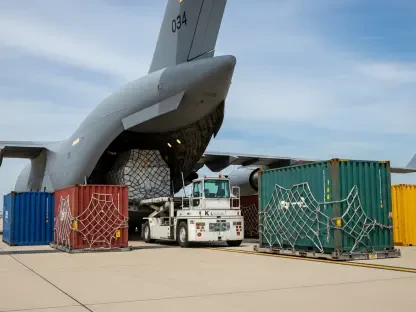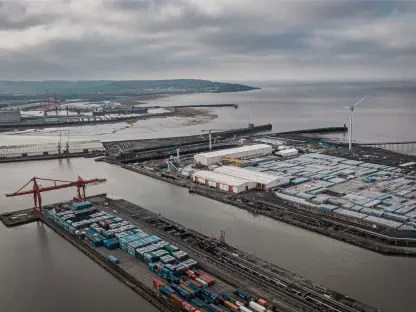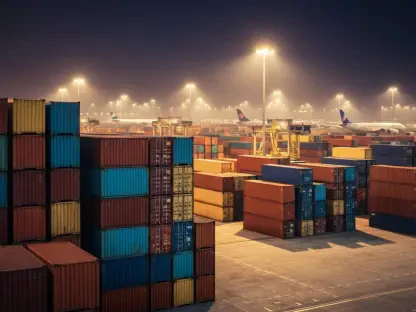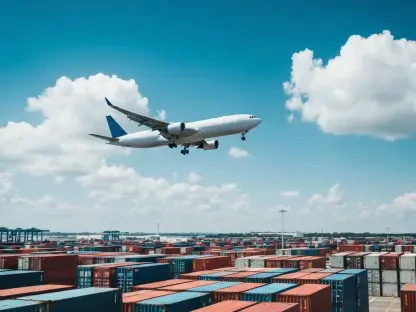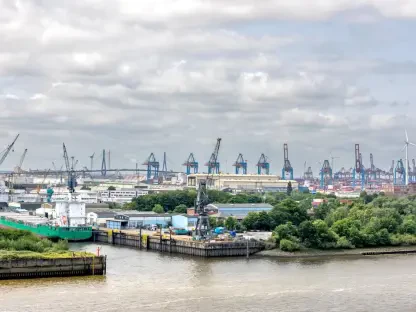In the ever-evolving landscape of international trade, few have a clearer view of the intricacies of shipping logistics than Rohit Laila. With decades of experience in the logistics industry, spanning supply chain management and delivery, Rohit has witnessed firsthand the impact of global trade policies and market shifts. His passion for technology and innovation in the sector adds a forward-thinking perspective to his insights. Today, we dive into the recent stabilization of China-U.S. trade routes, the effects of tariff changes on shipping patterns, and what the future might hold for these critical pathways.
How have blank sailings on China-U.S. trade routes evolved over the past year, and what’s driving these changes?
Over the past year, we’ve seen quite a rollercoaster with blank sailings on China-U.S. trade routes. Data from recent reports shows an 82% drop in cancellations from their peak in April, and an 83% reduction on U.S.-to-China routes from May’s high. Earlier in 2024, carriers were grappling with fluctuating demand as importers rushed shipments to beat anticipated tariff hikes, leading to a spike in cancellations during the spring. But as we moved into late 2024 and early 2025, things started to settle. The stabilization largely stems from carriers adapting to new trade patterns and a leveling off of demand, which has helped reduce the need for abrupt cancellations.
What strategies did carriers employ to navigate the ups and downs of demand and tariff uncertainties in 2024?
Carriers had to be incredibly agile in 2024. In the early months, particularly April through June, they faced lower demand as importers had already front-loaded shipments. Their response was to increase blank sailings—sometimes between 10 to 32 per month in each direction—to avoid operating at a loss with half-empty ships. Then, as September approached and new tariff actions loomed, we saw another spike in cancellations as they braced for potential disruptions. It was a balancing act of managing capacity while trying to predict how policy changes would impact trade flows. Thankfully, they’ve become more adept at these adjustments over time.
Can you walk us through the impact of the October agreement between the United States and China on shipping patterns?
The October agreement was a bit of a turning point. Many of us in the industry were expecting another rough month with a wave of blank sailings due to fears of escalating tariffs. But when the U.S. and China reached a deal to halt a fresh round of tariff hikes, carriers quickly dialed back their planned cancellations. This brought a sigh of relief to the market. Heading into November, planned blank sailings remained low, which suggests a newfound stability in these trade routes. It’s a clear example of how policy decisions can directly influence shipping logistics and capacity planning.
How have other major trade routes been affected by similar challenges this year?
It hasn’t just been the China-U.S. lane facing volatility. Other trade routes saw significant swings in 2024 as well. For instance, blank sailings from the U.S. East Coast to South Asia surged by 186% year over year, reflecting weaker demand for U.S. exports in those markets. Asia-to-Canada cancellations climbed by 80%, and on the U.S. West Coast to Europe route, we saw a 60% increase in blank sailings. These numbers point to broader challenges, like tariff pressures and softer consumer spending in key markets, which have forced carriers to cut capacity elsewhere to maintain profitability.
Looking ahead, what does the current data suggest about the stability of global trade routes in the near future?
The latest data paints a cautiously optimistic picture, at least for the China-U.S. routes. It seems the worst months of cancellations are behind us, with planned blank sailings remaining low as we head into the final weeks of 2025. Carriers appear to be adjusting to the new tariff environment and finding their footing with more predictable demand patterns. However, stability isn’t guaranteed—global trade is always subject to sudden policy shifts or economic downturns. For now, though, the trend suggests we’re moving toward smoother waters, at least in the short term.
What is your forecast for the China-U.S. trade routes over the next year or so?
Predicting the future of China-U.S. trade routes is always tricky given the geopolitical and economic variables at play. I expect we’ll see continued stabilization through 2025 if tariff policies remain consistent and demand doesn’t face major disruptions. Carriers have learned a lot from the past year’s volatility, so they’re likely to keep fine-tuning capacity to avoid overreacting to short-term fluctuations. That said, any unexpected policy changes or shifts in consumer behavior could quickly alter the landscape. I’m cautiously optimistic, but we’ll need to keep a close eye on both Washington and Beijing for any surprises.


